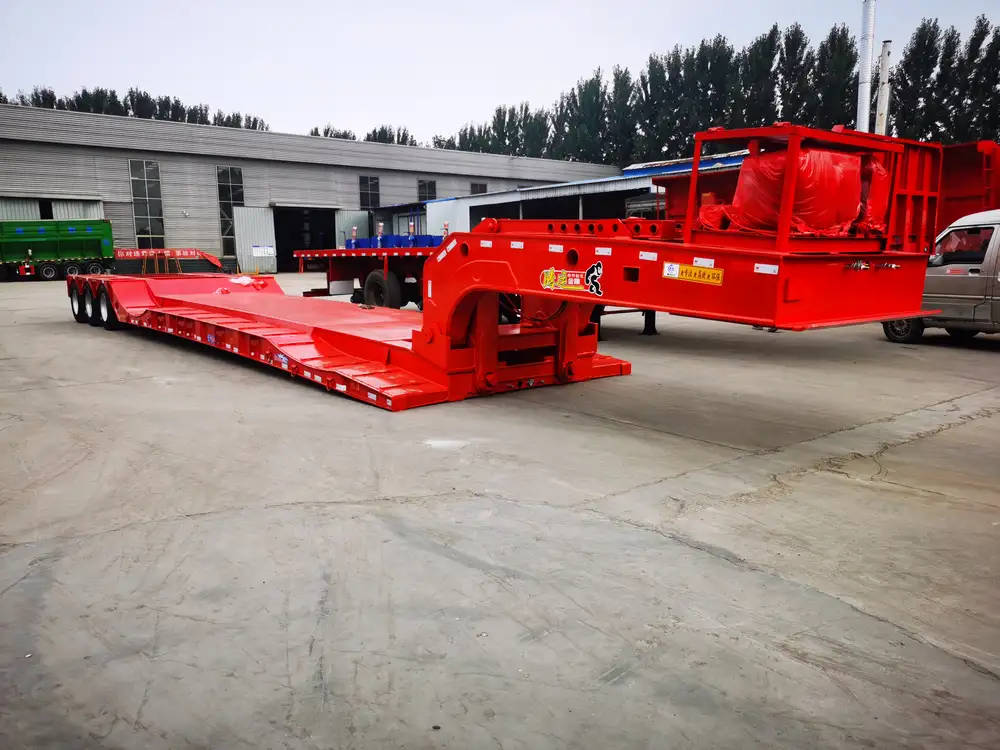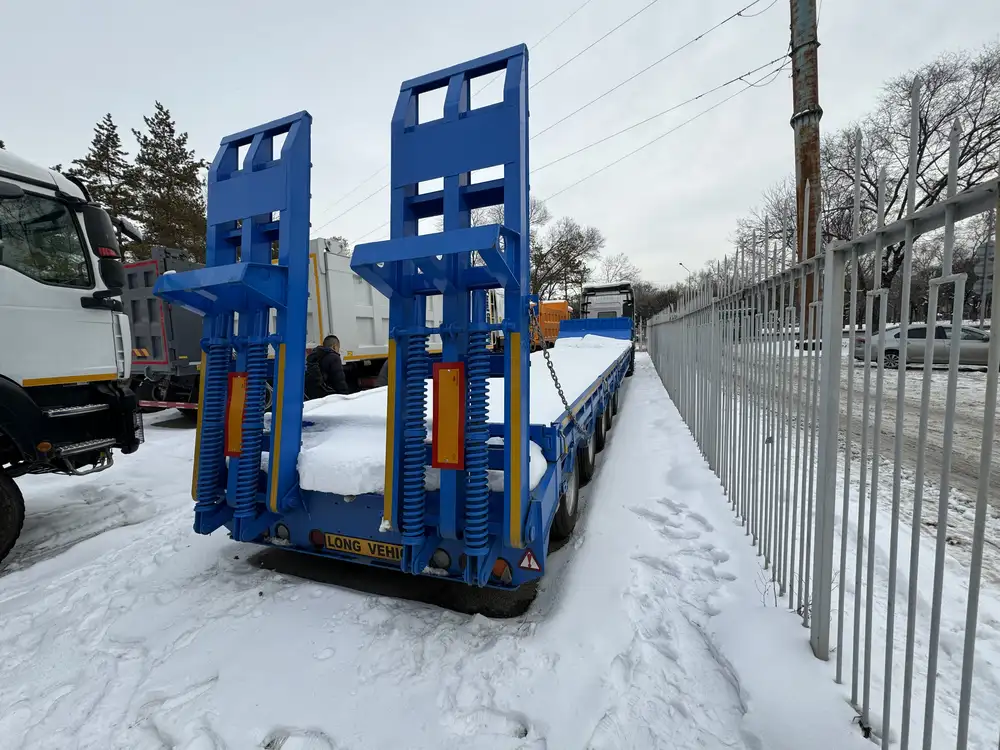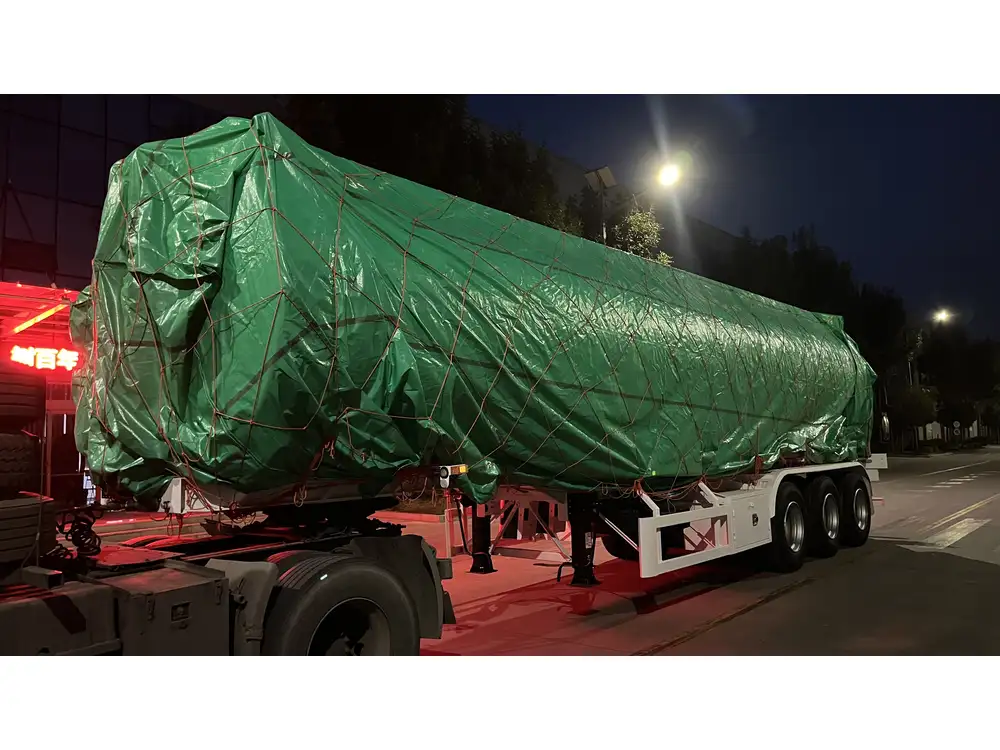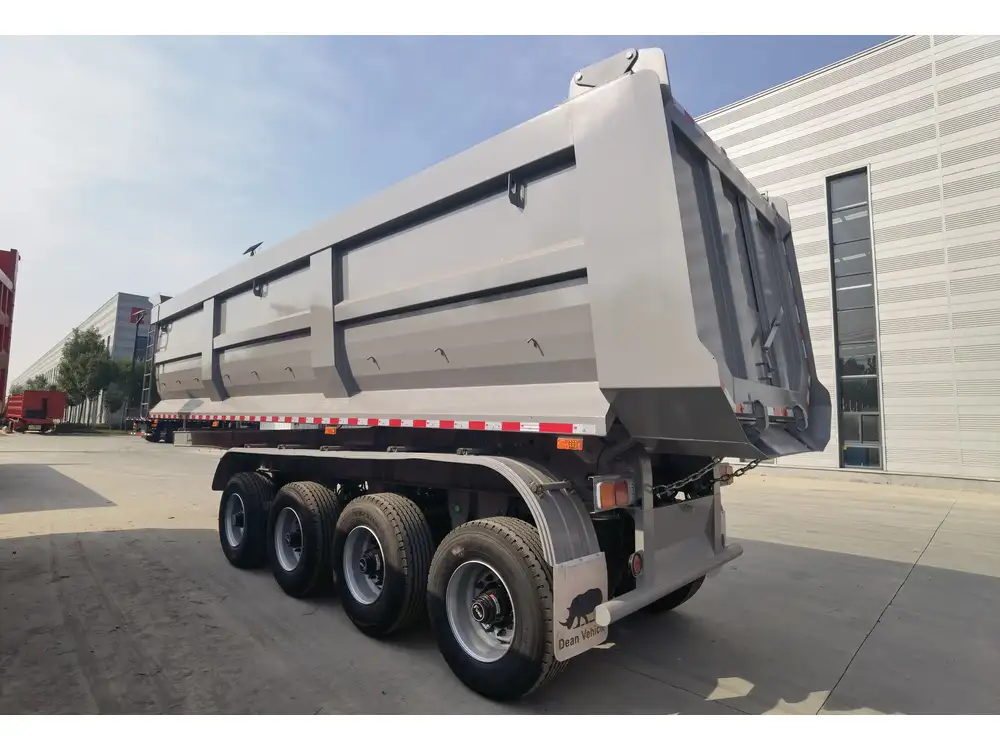When it comes to the transportation of bulk materials, side dump trailers stand out as a specialized option among semi-trailers. Their unique ability to unload materials efficiently makes them a popular choice in construction, mining, and agricultural sectors. However, a common question that arises among users and potential buyers alike is: how much can a side dump trailer hold? This article provides an in-depth analysis of side dump trailer capacities, factors affecting load limits, and practical tips for maximizing their usage.
What is a Side Dump Trailer?
A side dump trailer is designed with a hydraulic system that tilts the trailer to one side, allowing for an efficient unloading process. Unlike traditional dump trailers that hinge at the front, side dump trailers have a lower center of gravity, which enhances stability during both transport and unloading. This feature is particularly beneficial when dealing with loose materials such as sand, gravel, and other aggregates.
Key Components of a Side Dump Trailer
| Component | Description |
|---|---|
| Frame | The structural part that holds the trailer together, usually made of high-strength steel to withstand heavy loads. |
| Bed | The part where the materials are loaded; typically, it comes in various lengths and widths, customized based on user needs. |
| Hydraulic System | Enables the tilting of the trailer to facilitate dumping. It consists of hydraulic cylinders, hoses, and a power unit. |
| Tires | Heavy-duty tires equipped to handle the substantial weight of the trailer and its load. |
| Axles | Positioned under the frame to distribute the trailer’s weight evenly; the number of axles impacts load capacity. |

Determining Side Dump Trailer Capacity
Factors Influencing Load Capacity
The capacity of a side dump trailer is influenced by several factors, including:
Trailer Size: Side dump trailers come in various sizes, typically ranging from 20 to 40 feet in length. The dimensions directly impact the load it can carry.
Weight Rating: Each trailer has a Gross Vehicle Weight Rating (GVWR) defining the maximum safe weight the trailer can handle, including its own weight and the payload.
Material Density: The type of material being loaded plays a critical role in determining capacity. For instance, a trailer can hold more lightweight materials like sawdust compared to heavier loads such as boulders.
Axle Configuration: The number of axles in a side dump trailer can significantly increase its load capacity. More axles enable better weight distribution and compliance with road regulations.
Legal Transport Limits: It is essential to consider state and federal transportation regulations that govern the maximum allowed weight limits on highways.
Typical Capacities
The typical capacity for side dump trailers varies based on the factors mentioned above. Here’s a basic overview of capacities by size:
| Trailer Length | Typical Capacity (Cubic Yards) | Typical Capacity (Weight in Pounds) |
|---|---|---|
| 20 ft | 15 – 20 | Up to 40,000 |
| 30 ft | 25 – 30 | Up to 60,000 |
| 40 ft | 35 – 40 | Up to 80,000 |

Practical Applications of Side Dump Trailers
Side dump trailers are exceptionally versatile and can be used in various industries for transporting:
Construction Material: They are commonly used to haul gravel, sand, and soil required for construction projects. The quick dumping mechanism allows for rapid unloading, enabling seamless construction flows.
Agricultural Products: In farming, side dump trailers can transport feed, grains, and even root vegetables, making them valuable assets during harvest seasons.
Mining: They efficiently transport ore and other mined materials, ensuring quick turnaround times necessary in mining operations.
Maximizing Efficiency with Side Dump Trailers
To maximize the efficacy and lifespan of side dump trailers, consider the following tips:
Regular Maintenance: Scheduled inspections and maintenance of the hydraulic system, tires, and frames ensure smooth operations and prevent costly downtime.
Proper Loading Techniques: Distributing the load evenly is crucial for stability during transport. Overloading can lead to accidents, structural damage, or even trailer failure.
Understand Terrain Challenges: Be mindful of the terrain on which the trailer will operate. Off-road conditions may require specialized equipment or modifications for optimal performance.
Comparing Side Dump Trailers to Other Types of Dump Trailers
Understanding the differences between side dump trailers and other dump trailers can help users make informed decisions. Below is a comparison of side dump trailers against traditional end dump and live bottom trailers:
| Feature | Side Dump Trailers | End Dump Trailers | Live Bottom Trailers |
|---|---|---|---|
| Unloading Speed | Quick, lateral dumping | Slower, requires full elevation | Continuous unloading, minimal wait |
| Stability | Higher stability during dumping | Risk of tipping during unload | Stable during loading/unloading |
| Load Types | Versatile (gravel, sand, etc.) | Typically suited for bulk materials | Ideal for granular materials |
| Maintenance | Requires hydraulic checks | Needs regular inspection for hinge | Regular checks on conveyor system |

Frequently Asked Questions
How Much Weight Can a Side Dump Trailer Carry?
The amount of weight a side dump trailer can carry varies between models. Generally, a standard 30-foot side dump trailer can carry between 25,000 to 30,000 pounds of bulk material. Always refer to the manufacturer’s specifications for exact weights.
What Materials Are Best Suited for Side Dump Trailers?
Side dump trailers are best for materials that can be unloaded sideways without causing damage to the trailer or the load. Ideal materials include:
- Gravel
- Sand
- Asphalt
- Agricultural products

Are Side Dump Trailers More Expensive Than Other Dump Trailers?
Initially, side dump trailers can be pricier than traditional end dump trailers due to their complex design and hydraulic systems. However, the efficiency gains and reduced labor costs during unloading often justify the initial expense.
Can Side Dump Trailers be Used on Rough Terrain?
Yes, side dump trailers can be used on rocky or uneven surfaces. However, it is critical to ensure that the trailer is adequately loaded and that the hauler is experienced in navigating such terrains.
Conclusion
Investing in a side dump trailer can significantly enhance operational efficiencies across various industries that require the transportation of bulk materials. Understanding their unique capacities, maintenance needs, and operational advantages is crucial for maximizing productivity. Whether you are in construction, agriculture, or mining, knowing how much a side dump trailer can hold can aid in making informed decisions that align with both productivity and safety requirements.
Ultimately, the choice of a side dump trailer should align with your specific needs and operational conditions, ensuring that you leverage its capabilities to the fullest. Whether it involves selecting the appropriate size, understanding loading limits, or maintaining the equipment, such knowledge empowers users to achieve optimal performance while complying with industry regulations.



